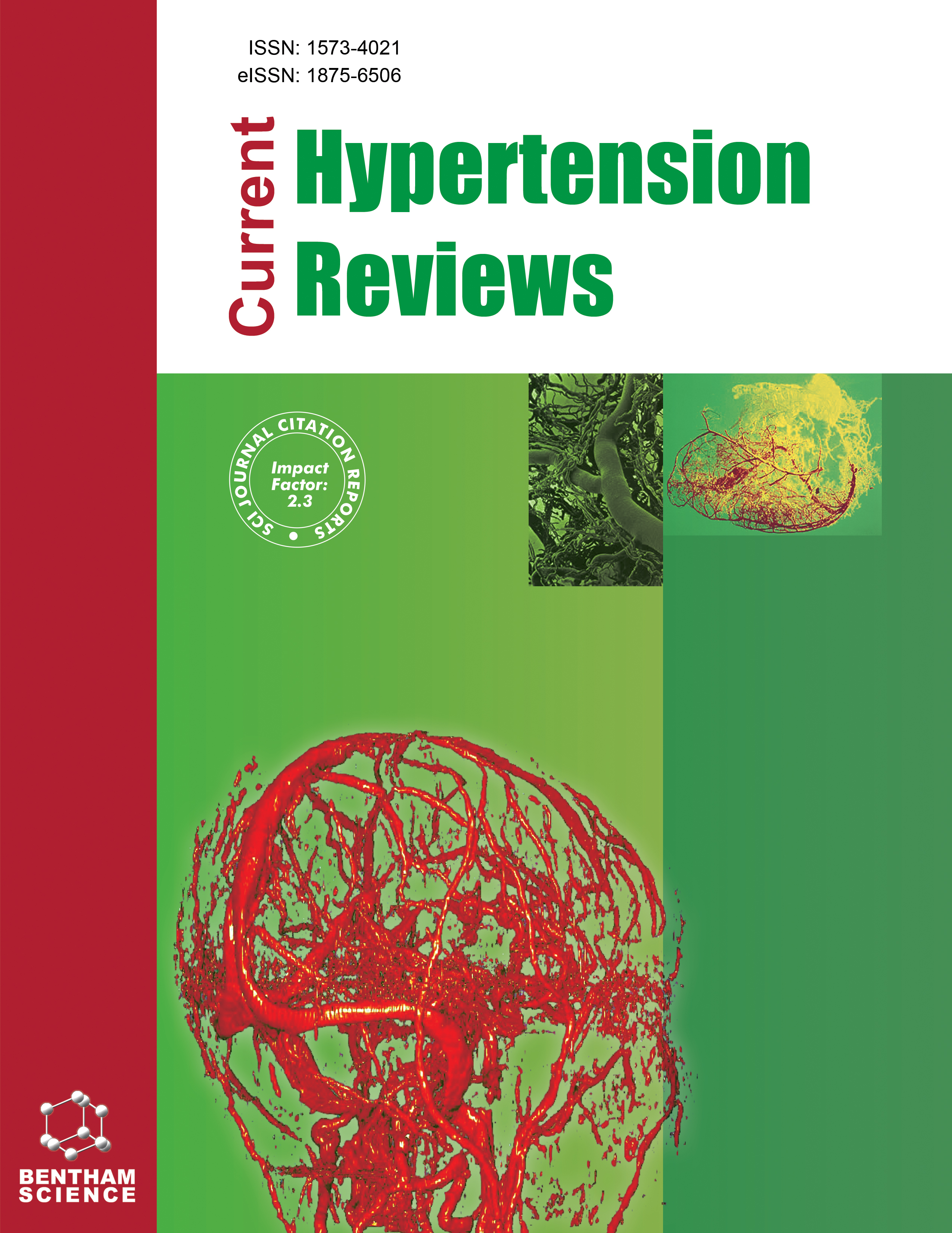- Home
- A-Z Publications
- Current Hypertension Reviews
- Previous Issues
- Volume 13, Issue 1, 2017
Current Hypertension Reviews - Volume 13, Issue 1, 2017
Volume 13, Issue 1, 2017
-
-
Early Vascular Ageing (EVA): Definitions and Clinical Applicability
More LessAuthors: Pedro Guimaraes Cunha, Pierre Boutouyrie, Peter M Nilsson and Stephane LaurentArterial stiffness has been accumulating evidence as an intermediate cardiovascular endpoint. It has been established as an independent risk marker for cardiovascular disease, and reflects the dissociation between chronologic and biologic age of large arteries-attributing earlier the risk that a normal vascular ageing process had installed to occur several years later. The concept of Early Vascular Ageing (EVA) is develope Read More
-
-
-
Microvascular Alterations in Hypertension and Vascular Aging
More LessHypertension and aging are characterized by vascular remodelling and stiffness as well as endothelial dysfunction. Endothelial function declines with age, since aging is associated with senescence of the endothelium due to increased rate of apoptosis and reduced regenerative capacity of the endothelium. Different phenotypes of hypertension have been described in younger and adult subjects with hypertension. In younge Read More
-
-
-
Early Functional and Structural Microvascular Changes in Hypertension Related to Aging
More LessAuthors: Roger de Moraes and Eduardo TibiricaIt is becoming increasingly clear that both microvascular network alterations and subsequent tissue perfusion defects may precede and predict the development of arterial hypertension and other cardiovascular and metabolic diseases, including diabetes and metabolic syndrome. Moreover, the subsequent functional and structural alterations in microvascular reactivity and density, as well as alterations in the macrocirculation ch Read More
-
-
-
Potential Role of Endothelin in Early Vascular Aging
More LessAuthors: Michelle Trindade, Wille Oigman and Mario Fritsch NevesEarly vascular aging is a process associated with gradual alterations in the vessels, regarding their structure and function, taking a more rapid course than normal biological aging in the arteries. In the presence of cardiovascular disease, these age-associated alterations are accelerated, contributing in the appearance or the progression of cardiovascular disease, such as high blood pressure, dyslipidemia, smoking and dia Read More
-
-
-
Management of Hypertension in Patients with Aortic Valvular Stenosis
More LessAortic stenosis (AS) has an increasing prevalence with age and is commonly associated with hypertension. While it has been established that hypertension is associated with increased mortality in patients with AS, further randomized control trials addressing the use of antihypertensives specifically in patients with AS are needed. The management of hypertension in patients with AS needs a cautious approach due to com Read More
-
-
-
Vascular Consequences of Aldosterone Excess and Mineralocorticoid Receptor Antagonism
More LessAldosterone binds to mineralocorticoid receptors (MRs) on renal epithelial cells to regulate sodium and water reabsorption, and therefore blood pressure. Recently, the actions of aldosterone outside the kidney have been extensively investigated, with numerous reports of aldosterone having detrimental actions, including in the vasculature. Notably, elevated aldosterone levels are an independent cardiovascular risk factor, an Read More
-
-
-
Patterns of Biomarkers in Cord Blood During Pregnancy and Preeclampsia
More LessBackground: Umbilical cord blood (UCB) is in contact with all the fetal tissues and can reflect the state of fetus and UCB can be compared with maternal blood. Inflammatory, metabolic and immunological disorders during pregnancy can affect the environment in which the fetus is developing and may produce various alterations. Objective: To analyze different biochemical parameters in maternal venous blood and Read More
-
-
-
Plasma Potassium Levels in Healthy Prehypertension Subjects and the Role of A High Potassium Drink
More LessAuthors: Farapti, Savitri Sayogo and Parlindungan SiregarBackground: Most populations around the world consume less than the recommended levels of potassium. Long term low potassium intake could lead to decreased plasma potassium levels and induce hypokalemia. The increasing of plasma potassium levels 0,2-0,4 mmol/L by improving potassium intake decreased significantly blood pressure (BP). Assessing plasma potassium levels in healthy people related to potassium i Read More
-
-
-
The Ignored Role of Intraoperative Hypotension in Producing Postoperative Acute Kidney Injury-An Obligatory Appeal for More Preventative Nephrology
More LessAuthors: Macaulay Amechi Chukwukadibia Onuigbo and Nneoma AgbasiBackground/Objective: Intraoperative hypotension (IOH) invariably follows the induction of general anesthesia during surgical operations. The current prevailing and predominant consensus is that IOH has immense clinical benefits such as reduced bleeding, less need for blood transfusions, and shorter surgery times. Simultaneously, it is assumed that IOH is devoid of adverse renal, hepatic and neurological consequences. E Read More
-
Volumes & issues
-
Volume 21 (2025)
-
Volume 20 (2024)
-
Volume 19 (2023)
-
Volume 18 (2022)
-
Volume 17 (2021)
-
Volume 16 (2020)
-
Volume 15 (2019)
-
Volume 14 (2018)
-
Volume 13 (2017)
-
Volume 12 (2016)
-
Volume 11 (2015)
-
Volume 10 (2014)
-
Volume 9 (2013)
-
Volume 8 (2012)
-
Volume 7 (2011)
-
Volume 6 (2010)
-
Volume 5 (2009)
-
Volume 4 (2008)
-
Volume 3 (2007)
-
Volume 2 (2006)
-
Volume 1 (2005)
Most Read This Month
Article
content/journals/chyr
Journal
10
5
false
en


